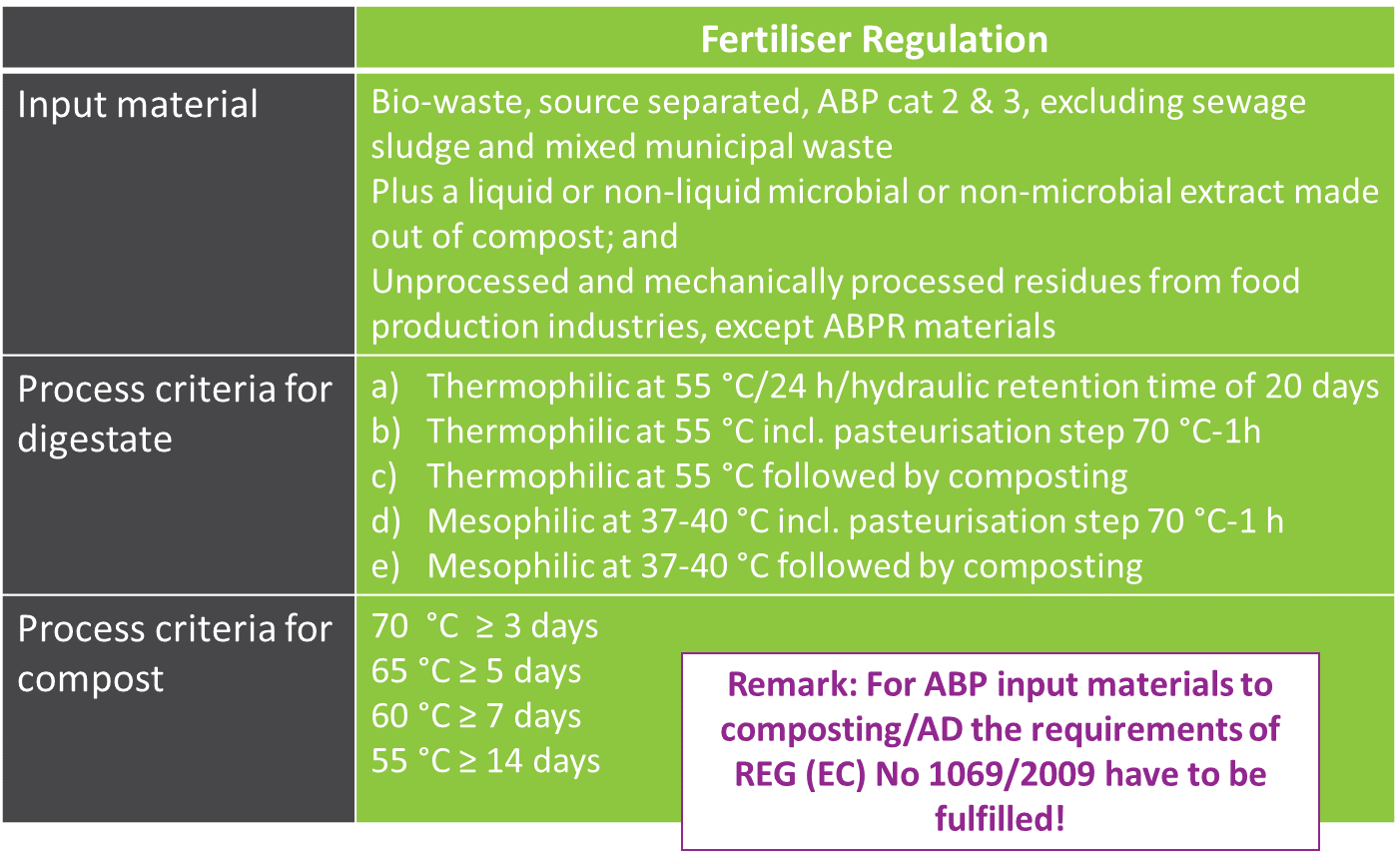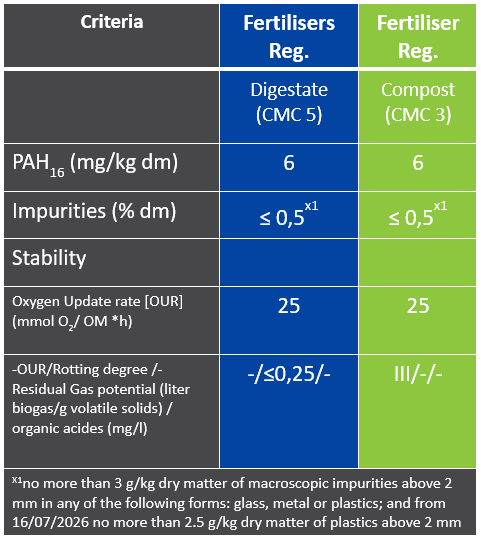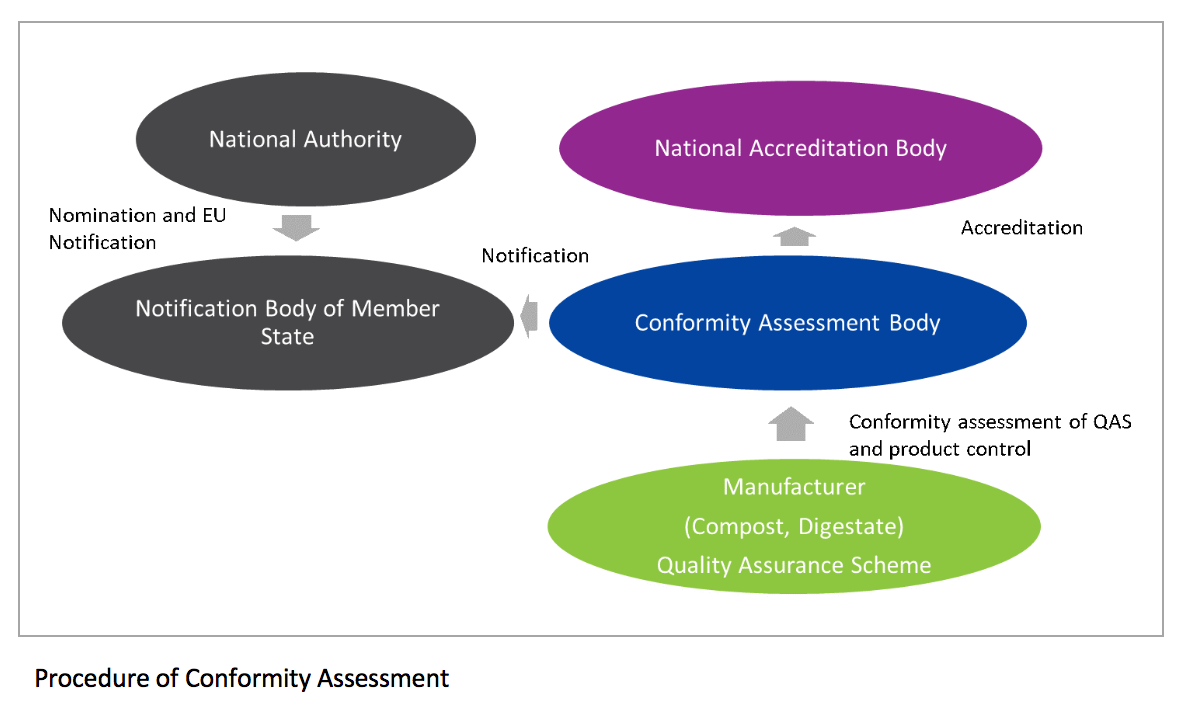In July 2019, the EU Fertilising Products Regulation was published with the objective of placing secondary raw materials on the EU fertiliser market in order to protect primary raw materials. It aims to enable recycled organic fertilisers and soil improvers (composts and digestate products) access to the EU internal market so that they can compete on an equal level with mineral fertilisers.
The main objectives were:
- Boosting organic matter (bio-waste) recycling from bio-waste
- Integration of organic fertilising products into the scope of the NFR
- Introducing harmonised EU rules for products diverting from organic waste materials
- Creating access to CE marking and free trade for organic fertilising products across EU
I. Structure of the Fertilising Products Regulation
II. Requirements for compost and digestate
III. Input Materials
IV. Process Requirements
V. Additional Safety Criteria for Compost and Digestate
VI. External Conformity Assessment
Evaluation of the EU Fertilising Products Regulation
The European Commission launched a call for evidence and a public consultation on the evaluation of the Fertilising Products Regulation (FPR) until 19 September.
The FPR provides that by July 2026, the Commission should conduct an evaluation of the Regulation, which came into force in 2022. The purpose of this evaluation is to consider whether the Fertilising Products Regulation has been delivering on its objectives since its entry into application and to identify its strengths and weaknesses.
You can find the open consultation here: link.
ECN Position Papers
ECN Feedback on the Evaluation of the EU Fertilising Products Regulation (EU FPR) 239.91 KB 8092 downloads
The ECN, which represents the circular bioeconomy in Europe and produces quality...ECN Proposal on the Conformity Assessment of Compost and Digestate under Module D1 205.13 KB 205 downloads
...ECN Proposals for further amendments to the EU Fertilising Products Regulation 360.59 KB 154 downloads
...ECN Feedback on Technical Study on the inclusion of new materials 436.24 KB 119 downloads
...ECN Comments and Proposals for Draft Delegated Act on Post-Processing Digestate 244.95 KB 168 downloads
...
I. Structure of the Fertilising Products Regulation
T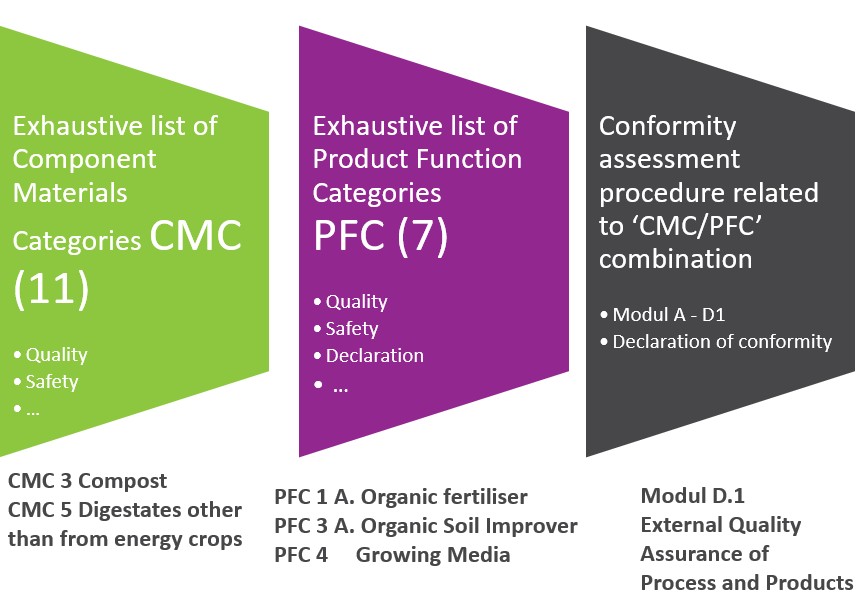 he regulation defines in Annex II a list of component material categories (CMC), of which compost is CMC 3 and non-energy crop digestate is CMC 5. Specific labelling requirements are also set out for product function categories (PFC), which are subdivided into fertilizers, soil improvers, growing media, liming materials and biostimulants.
he regulation defines in Annex II a list of component material categories (CMC), of which compost is CMC 3 and non-energy crop digestate is CMC 5. Specific labelling requirements are also set out for product function categories (PFC), which are subdivided into fertilizers, soil improvers, growing media, liming materials and biostimulants.
Manufacturers of these product groups have to demonstrate that their products comply with environmental and health requirements (limit values for physical and chemical contaminants) in order to display the CE mark on their products. In addition, compost and digestate products manufactured from waste must be subject to external quality control, which is recognized by each Member State through a conformity assessment.
In order to avoid creating additional barriers to the marketing of established secondary raw materials in national markets, the regulation foresees an ‘optional harmonisation’. This means that compost and digestate manufacturers can decide whether to label their products with the CE mark: they can either freely trade their CE-marked products on the internal market
in accordance with common European rules, or simply market their
non-CE marked products according to national rules.
II. Requirements for compost and digestate
Th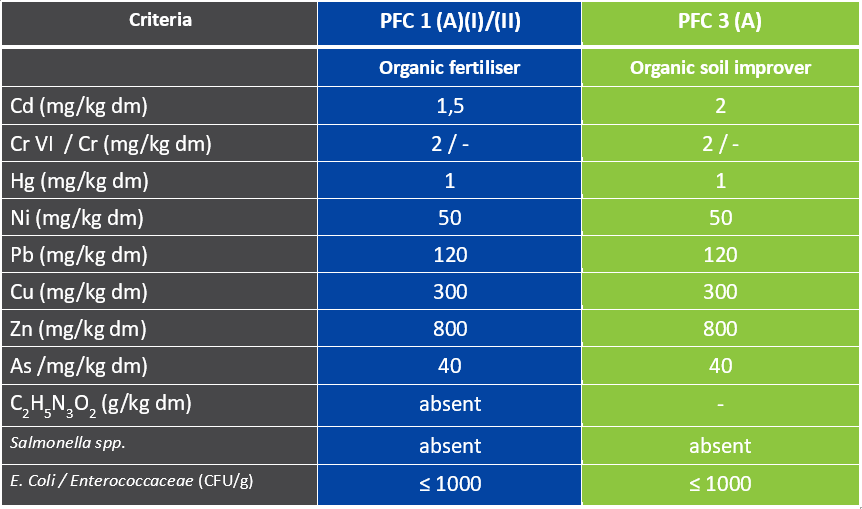 e regulation sets out criteria covering safety, quality and labelling that all fertilising products must meet so that they can be freely traded throughout the EU. In addition, quality requirements for specific raw materials for the production of fertilisers, soil improvers and growing media are specified in the annexes.
e regulation sets out criteria covering safety, quality and labelling that all fertilising products must meet so that they can be freely traded throughout the EU. In addition, quality requirements for specific raw materials for the production of fertilisers, soil improvers and growing media are specified in the annexes.
For compost and digestate products, these specific requirements are based on the JRC Report 2014 (End of Waste Criteria for Biodegradable Waste Subjected to Biological Treatment). In addition to requirements covering the production process and product quality, only separately collected organic waste is permitted as input materials for composting and anaerobic digestion.
III. Input Materials
For the component materials ‘compost’ and ‘digestate’ only specific input materials are allowed and specific process requirements for composting and anaerobic digestion are described. As suitable input materials, source separated bio-waste, including animal by-products category 2 and 3 materials and residues from food processing industries, can be used. Excluded as input materials are sewage sludge and mixed municipal waste.
IV. Process Requirements
The general process requirements are comparable to the process requirements laid down in the ECN–QAS and in several national quality assurance schemes.
For all animal by-product input material, like catering waste, the EU Fertilising Products Regulation recognises only the animal by-products transformation standard of 70 °C for at least 1 hour at a maximum particle size 12 mm, which is not suitable for composting.
Therefore, the European Compost Network submitted an application on new European transformation parameters for composting animal by-products to the European Food and Safety Authority (EFSA). If alternative methods will not be adopted, it is unlikely that any compost or digestate including kitchen waste will be placed as CE marked fertilising product on the European market.
VI. External Conformity Assessment
The final fertilising products can be placed on the market according to a specific conformity assessment procedure. If compost (CMC3) or digestate (CMC5) from waste materials are used in an organic fertiliser, solid improver or growing media, an external conformity assessment, including process and product control by a notified body will be obligatory.

